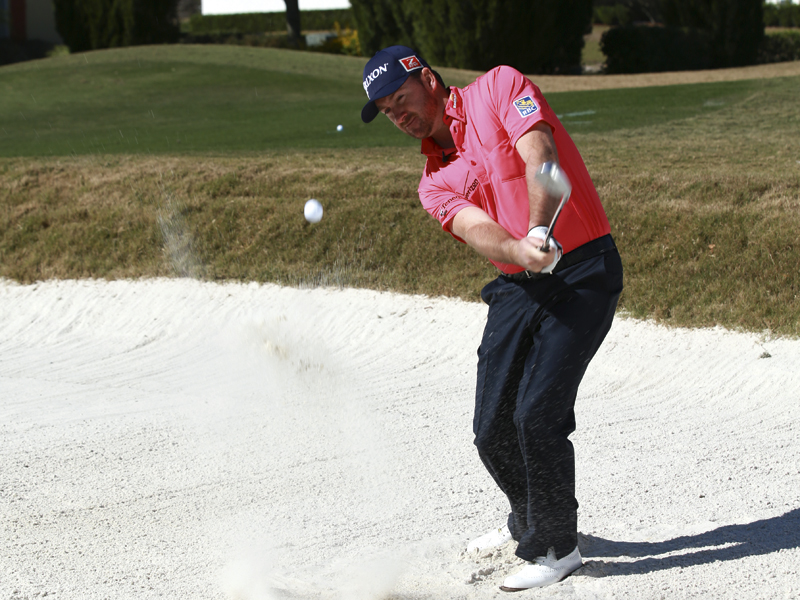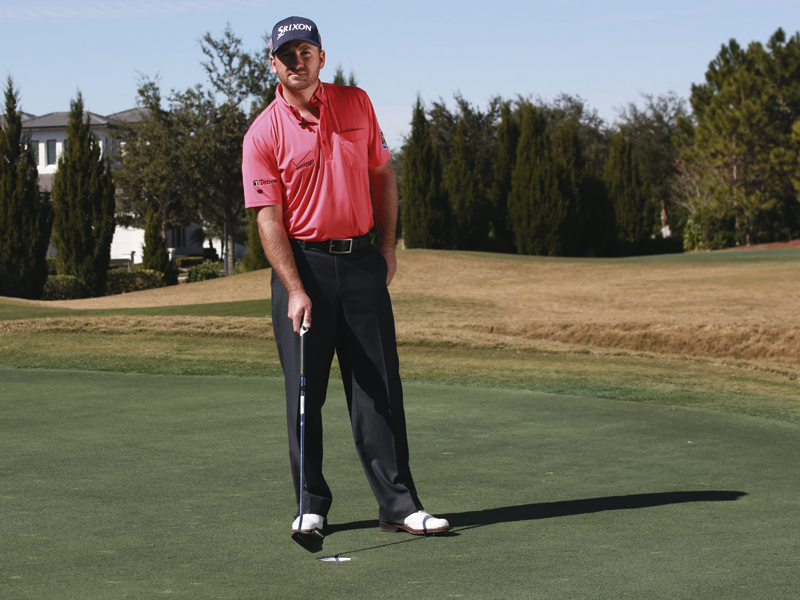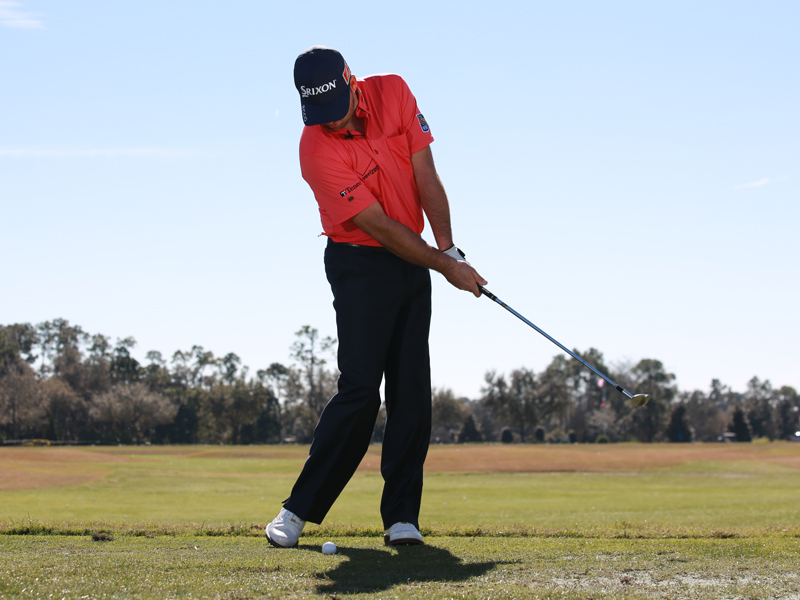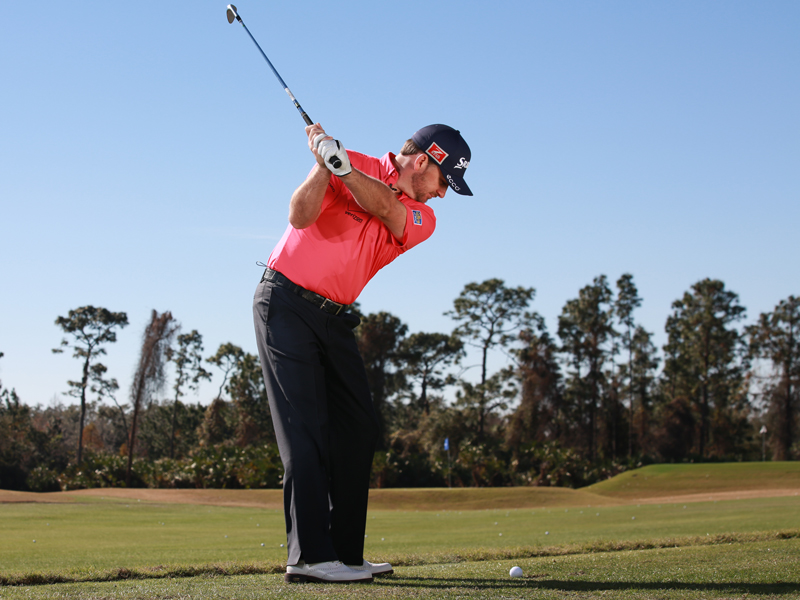Graeme McDowell: Bunker play tips

In this exclusive Graeme McDowell bunker play tips lesson, the Northern irishman describes the best way to escape with your score in tact.
Graeme McDowell Bunker play tips - 1. Set Up
The set-up is key to your ability to be able to play the bunker shot well. You create added loft on the club by leaning the shaft back at address, rather than pointing the face to the right of your target.
Once you have leaned the shaft back, creating extra loft, you can then position your body, setting up with the bitt of the club pointing directly at your belt. This is a great way for golfers of any standard to ensure they set up correctly. This will also help you use the bounce of your wedges as they were designed.
Far too often I see amateurs set up too often in bunkers. Somewhere along the line someone has told them to open up their stance and swing across the ball, but when this gets exaggerated the ball won't come out of the bunker with any control or consistency.
2. Maintain loft
One thing I really like to feel is that the sand stays on the club as long as possible after impact. This will occur when you maintain the loft that you set at address both back and through.
Get the Golf Monthly Newsletter
Subscribe to the Golf Monthly newsletter to stay up to date with all the latest tour news, equipment news, reviews, head-to-heads and buyer’s guides from our team of experienced experts.
A great drill is to put sand of the face of your wedge at address. Look to keep that sand on the face as long as possible as you take the club back, getting the feeling that you are throwing the sand over your right shoulder.
Also, when practising, feel like you are keeping the sand on the face as you come through the strike, maintaining that loft and sending the ball up in the air. If you are too open and drag across the ball, you will lose the sand straight away.
3. Taking sand
If you find yourself catching bunker shots heavy or thin, you should have a think about the amount of sand you are taking. Ideally, you should be taking the size of a £5 note around the ball - half an inch in front of it and half an inch behind.
Read Graeme's guide to pitching
You can draw a rectangle this size around the ball when practising to help you focus on where the club should enter and leave the sand.
Of course, striking the sand before the ball is a must, so check your ball position at address. You can see form the picture that it is forward in my stance.
-
 JM Eagle LA Championship Prize Money Payout 2025
JM Eagle LA Championship Prize Money Payout 2025The LPGA Tour heads to California for the JM Eagle LA Championship, where the largest prize money payout of the season so far is on the table
By Mike Hall Published
-
 Corales Puntacana Championship Prize Money Payout 2025
Corales Puntacana Championship Prize Money Payout 2025The PGA Tour’s latest opposite field event features an attractive prize money payout and some former champions in the field
By Mike Hall Published
-
 Graeme McDowell: Best green reading tips
Graeme McDowell: Best green reading tipsThe Northern Irishman describes the best way to go about putting
By Will Medlock Published
-
 Graeme McDowell Master the 80 yard pitch
Graeme McDowell Master the 80 yard pitchBy Neil Tappin Published
-
 Graeme McDowell Master the 100 yard pitch
Graeme McDowell Master the 100 yard pitchBy Neil Tappin Published
-
 Graeme McDowell: Master the 120 yard pitch
Graeme McDowell: Master the 120 yard pitchThe Northern Irishman gives his top tips for pitching
By Will Medlock Published